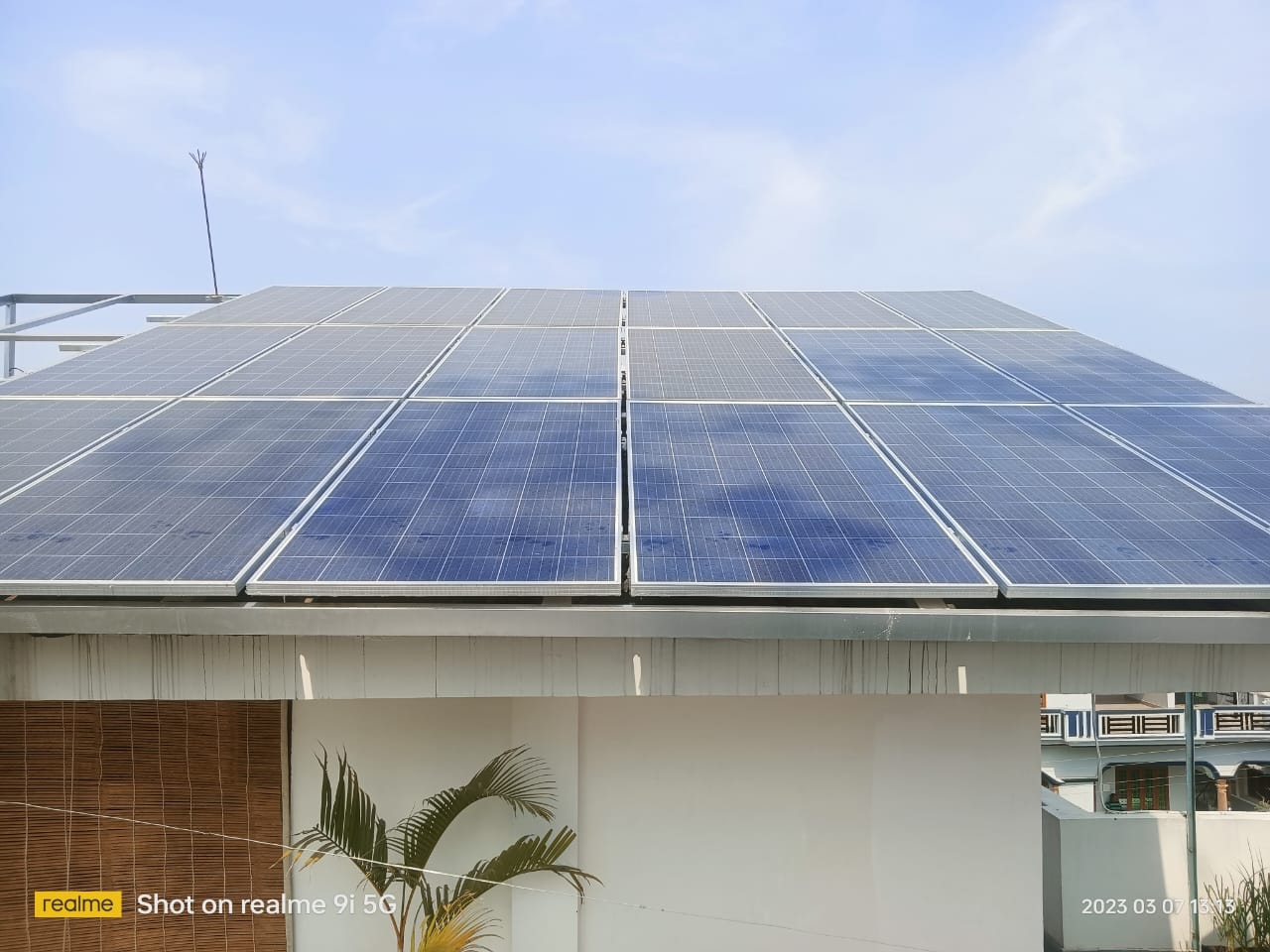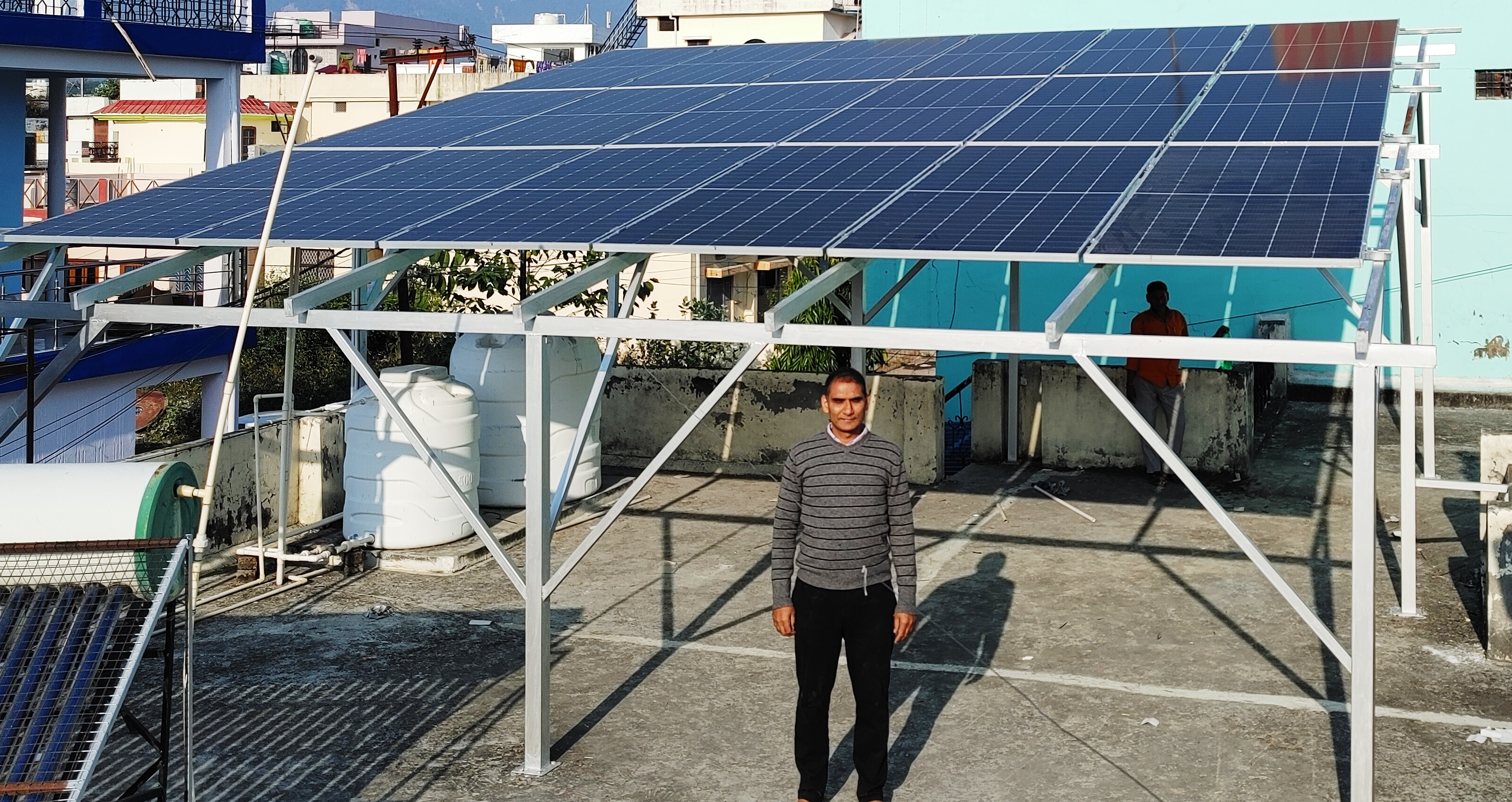Off-Grid Solar Plant
An off-grid solar plant is a standalone solar power system that operates independently from the main electricity grid. It typically includes solar panels, a battery storage system, an inverter, and a charge controller to store and manage electricity for use when sunlight is unavailable.
Key Components of an Off-Grid Solar System

Key Components of an Off-Grid Solar System
- Solar Panels – Convert sunlight into DC electricity.
- Charge Controller – Regulates voltage and prevents battery overcharging.
- Battery Bank – Stores excess electricity for use at night or during cloudy days.
- Inverter – Converts DC power from batteries into AC power for household or industrial
- appliances.
- Backup Generator (Optional) – Provides additional power during extended periods of low
- sunlight.
Challenges & Considerations

Challenges & Considerations
- High Initial Cost – Batteries and inverters can be expensive.
- Energy Storage – Sizing the battery bank properly is crucial to ensure 24/7 power.
- Maintenance – Batteries require periodic maintenance and replacement.
- Power Limitations – Must be carefully sized to meet energy needs without excess
- wastage.
Advantages of Off-Grid Solar

Advantages of Off-Grid Solar
- Energy Independence – No reliance on the utility grid.
- Ideal for Remote Areas – Useful in locations with no electricity infrastructure.
- Eco-Friendly – Reduces carbon footprint by using renewable energy.
- Long-Term Savings – Cuts electricity costs over time despite high initial investment.
